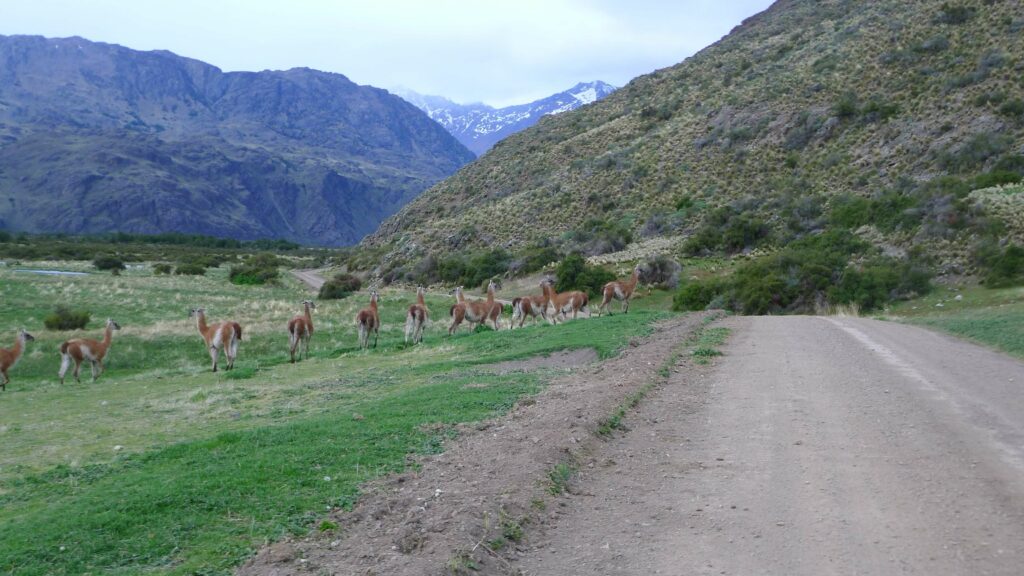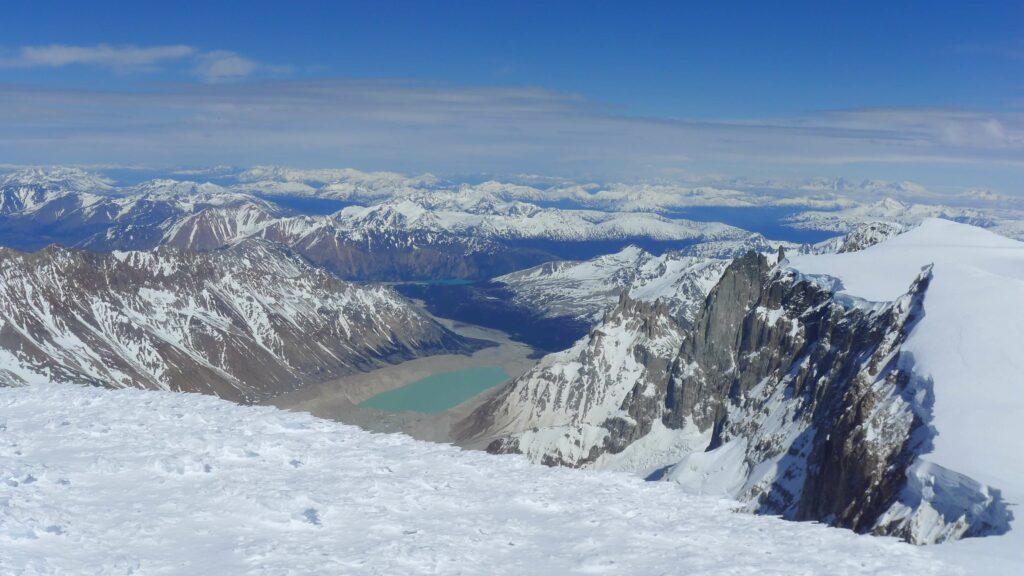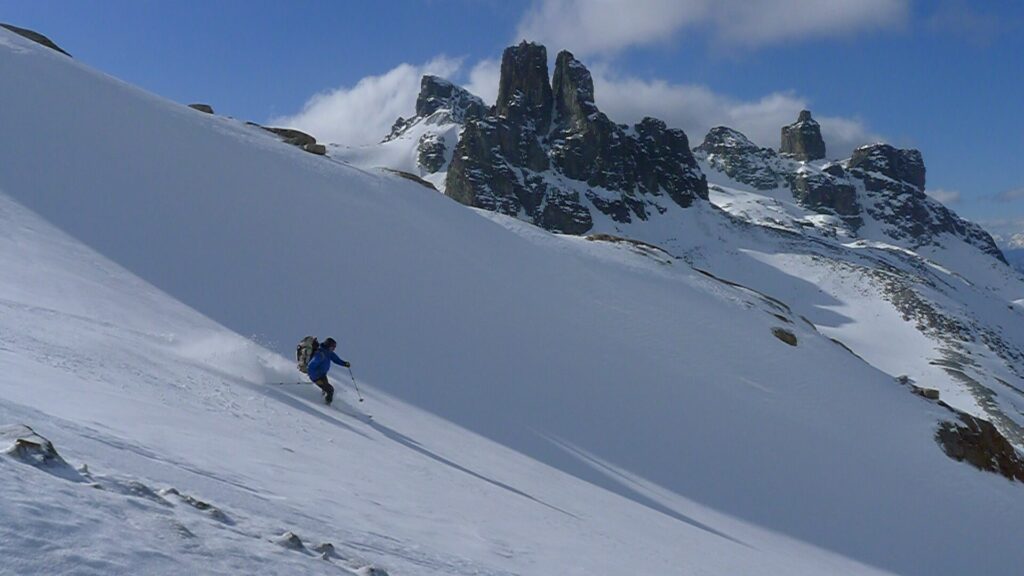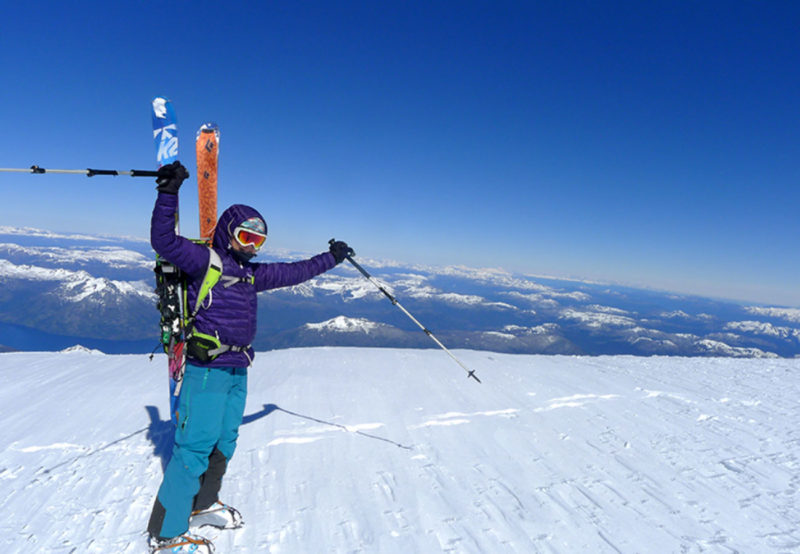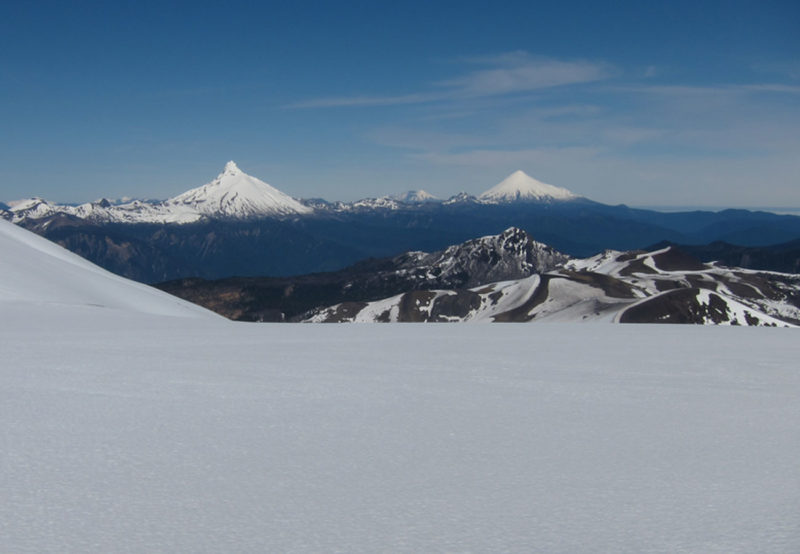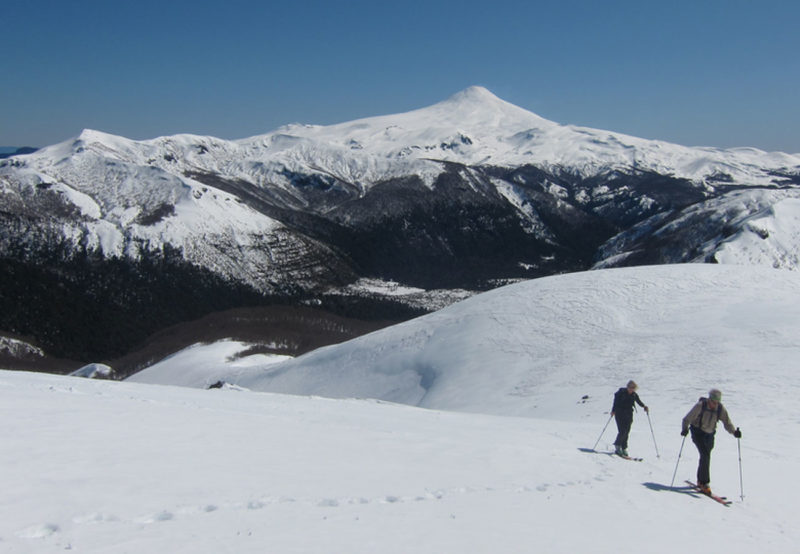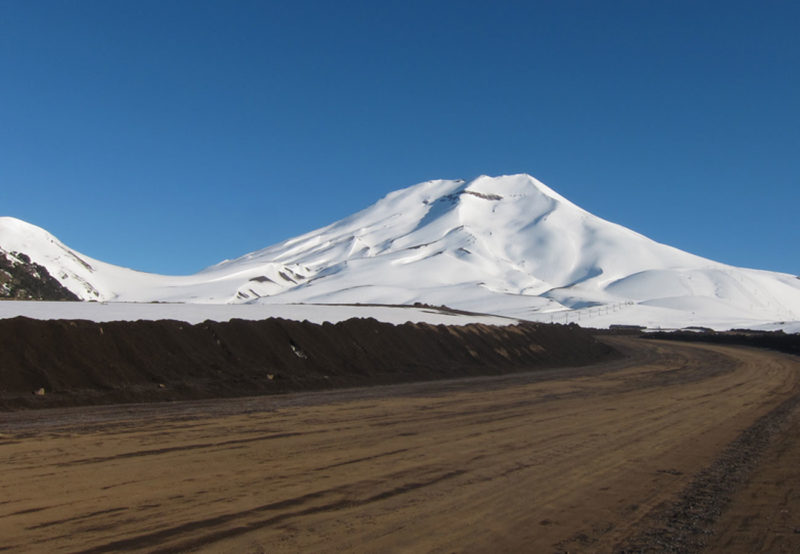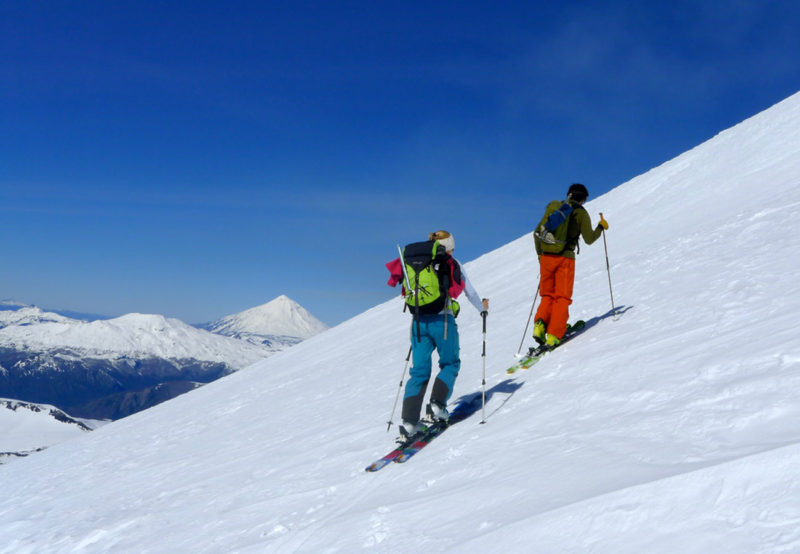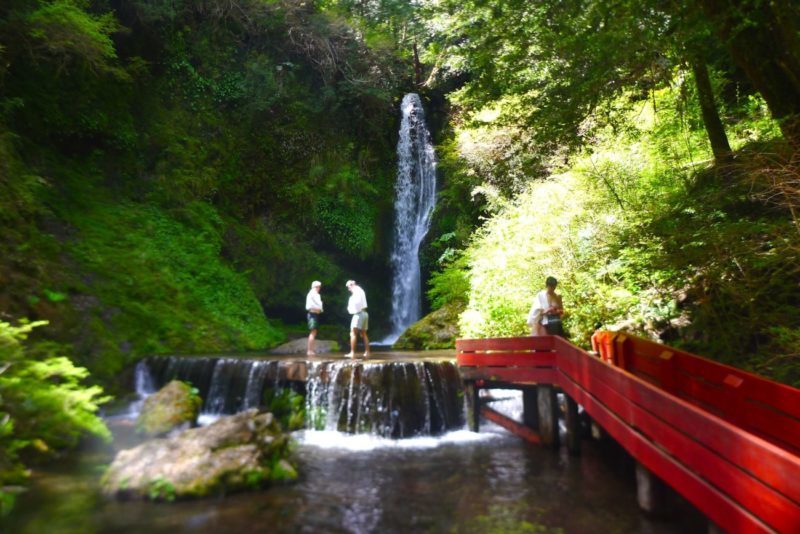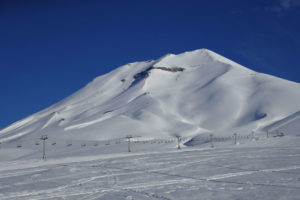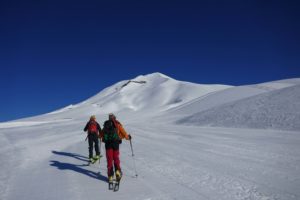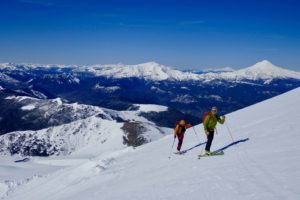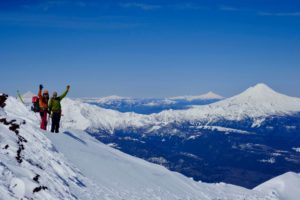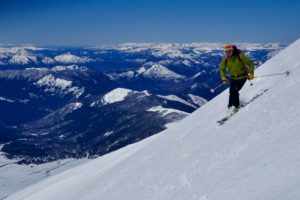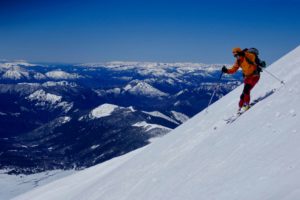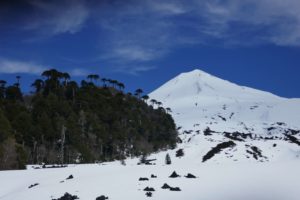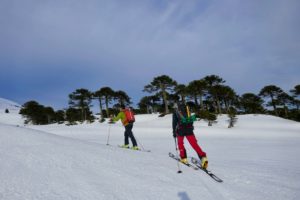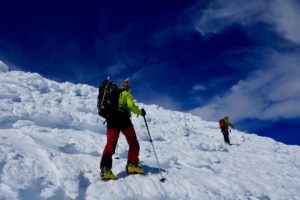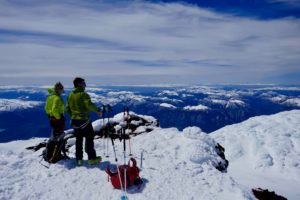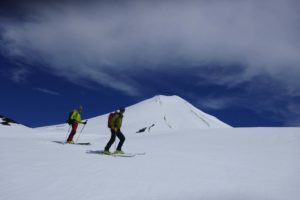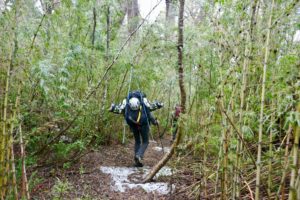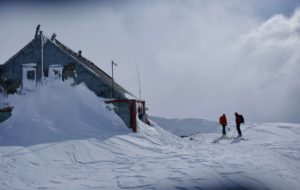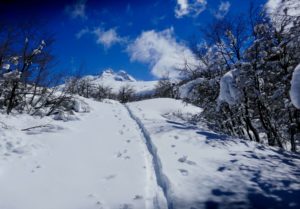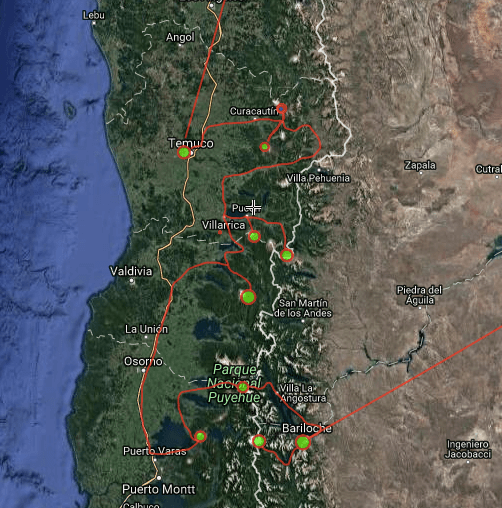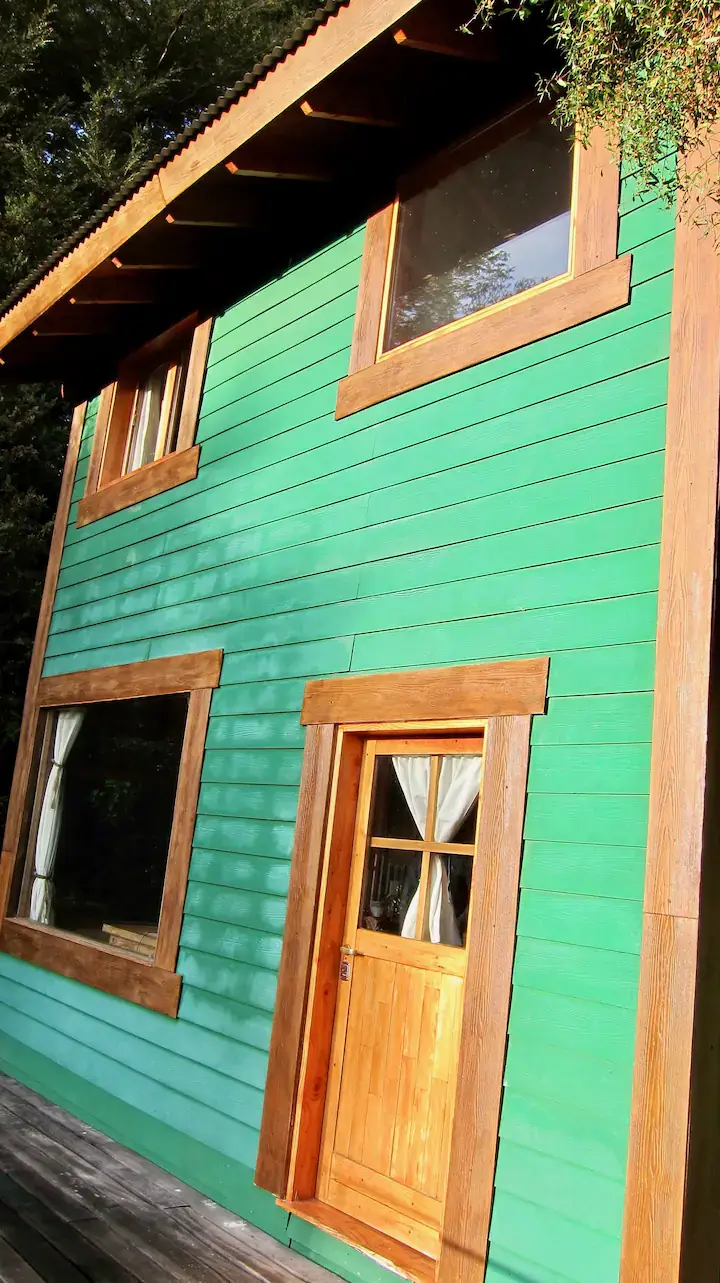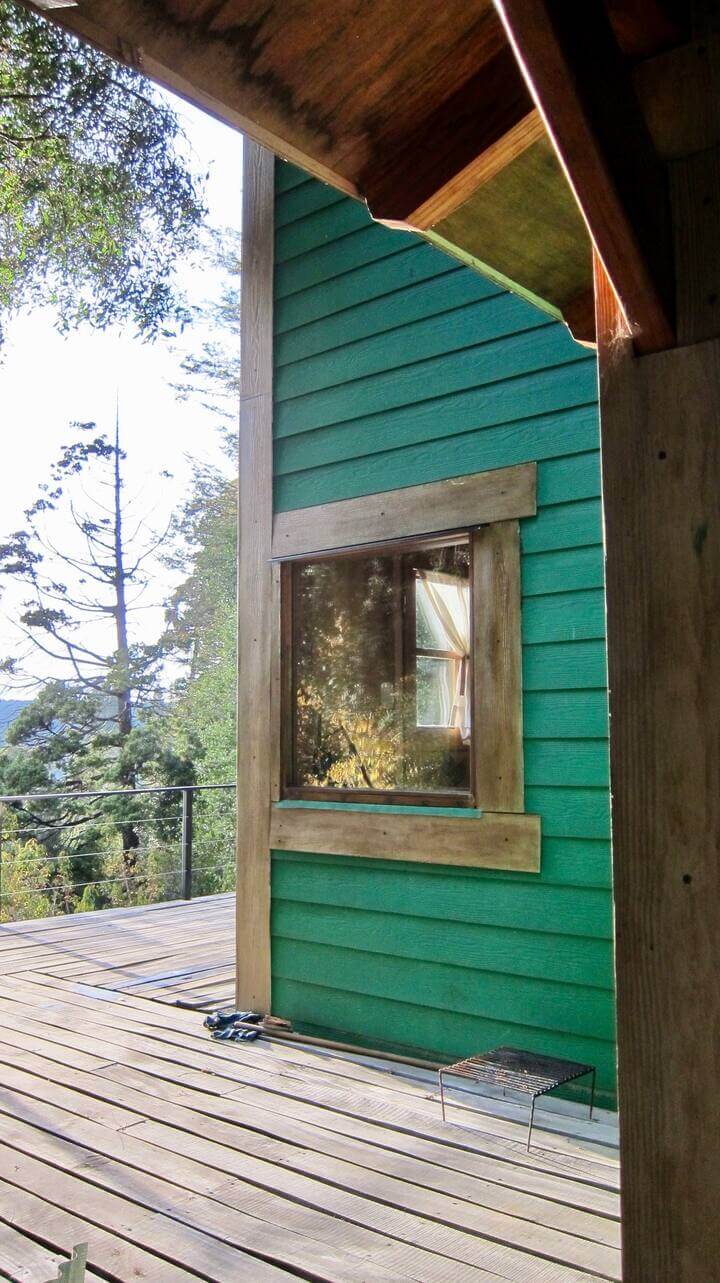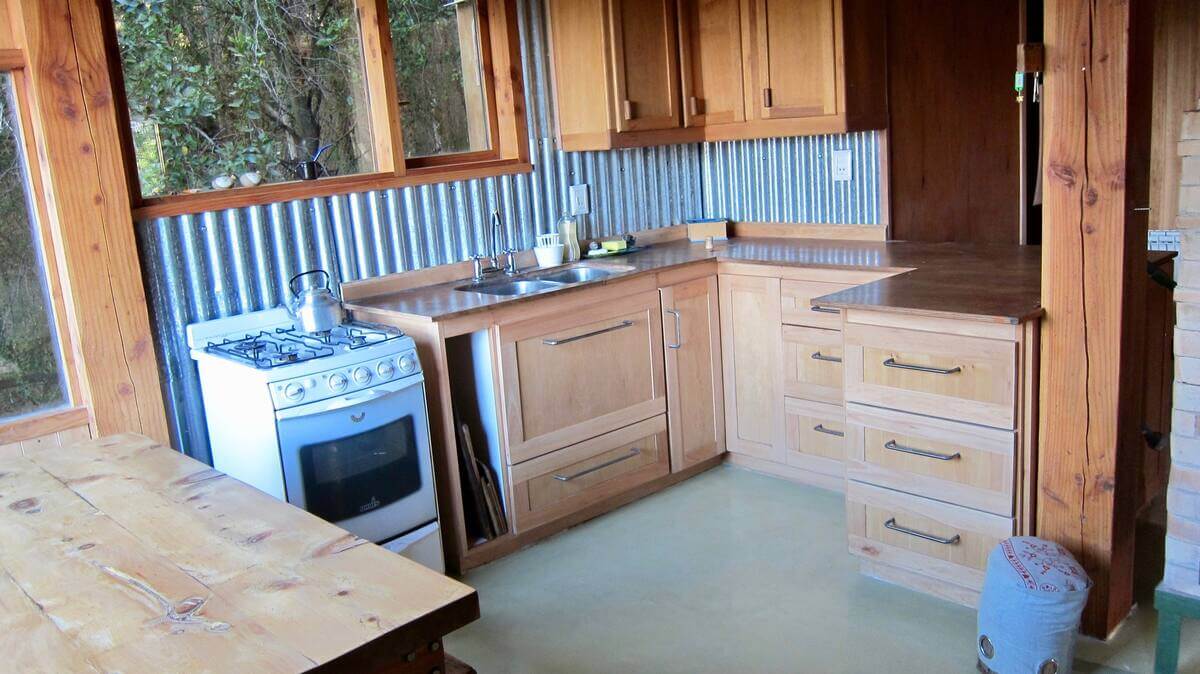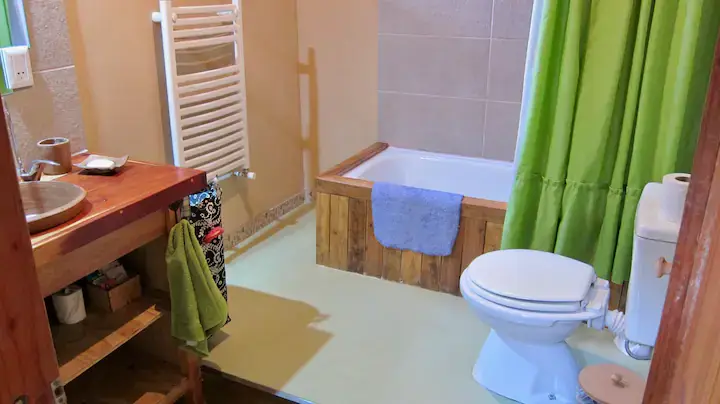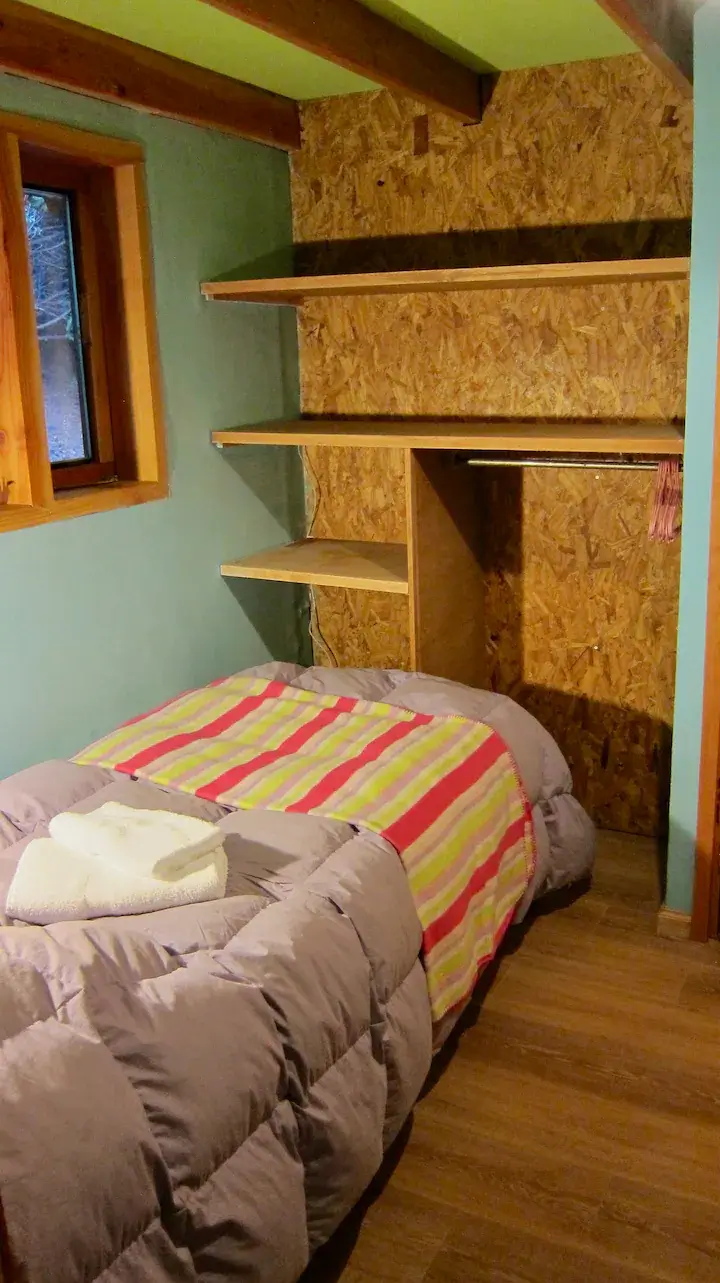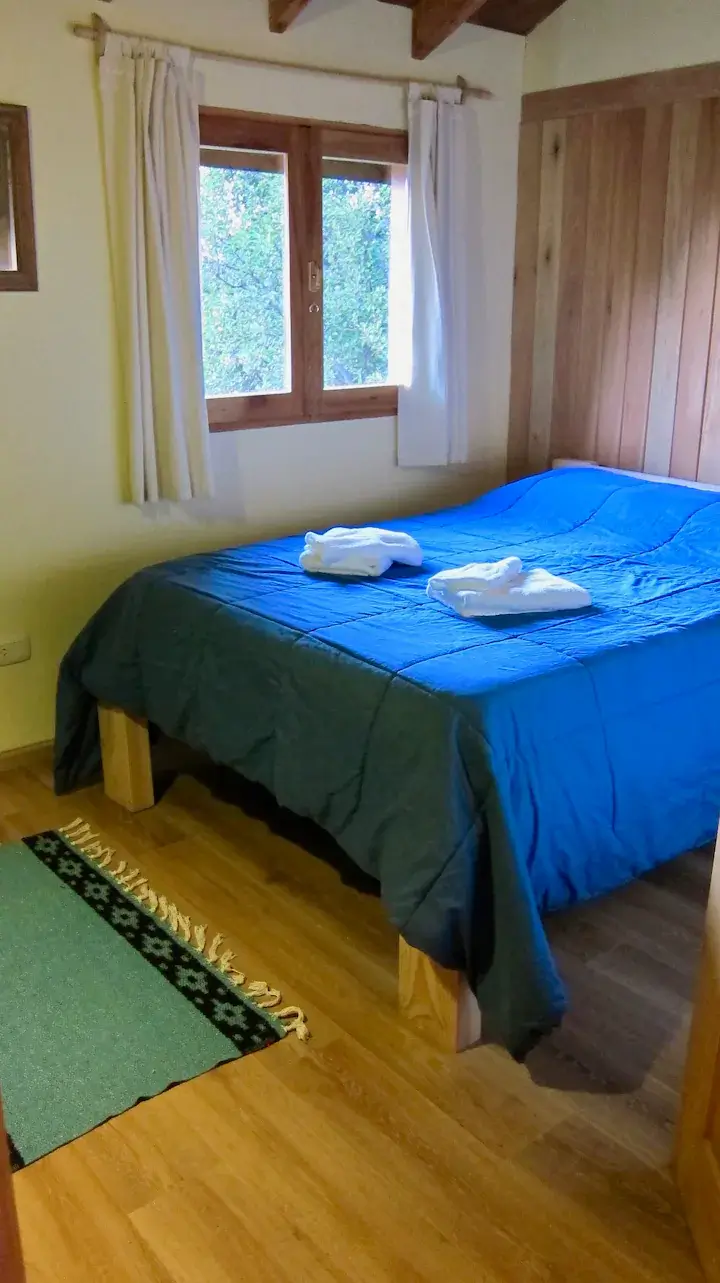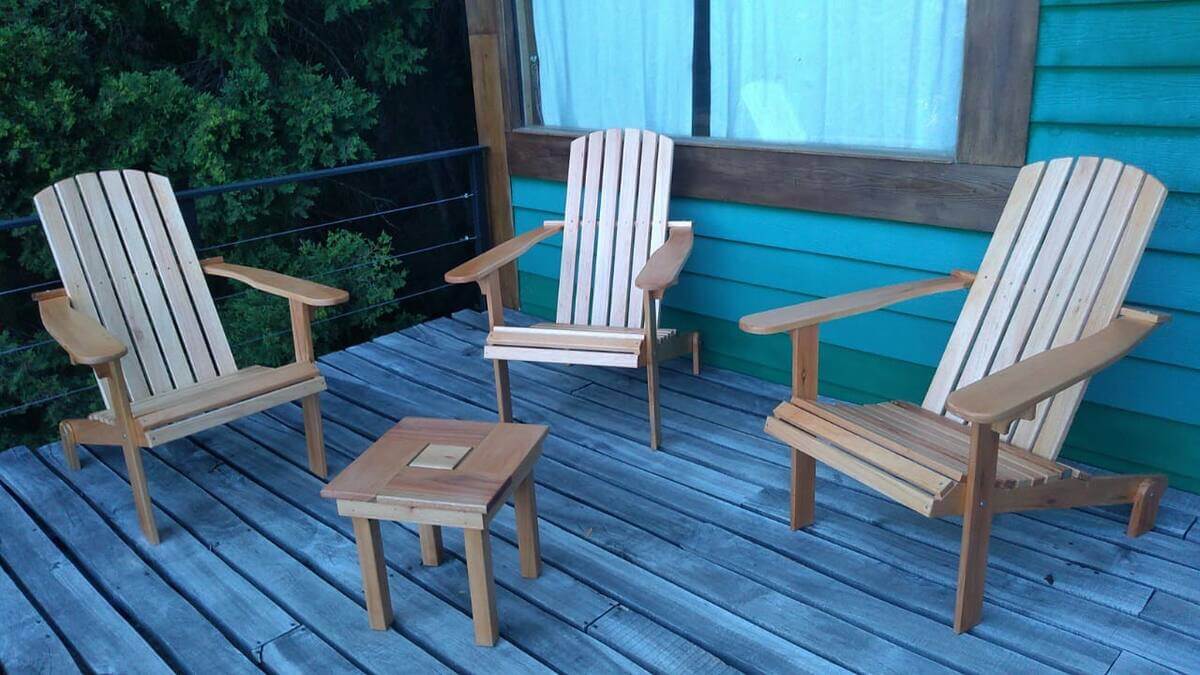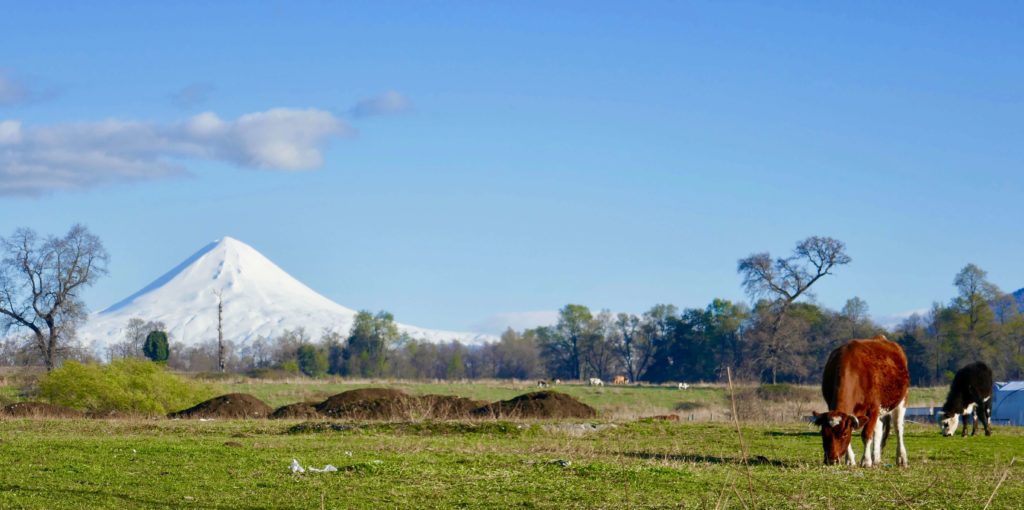Dates:
- September – November
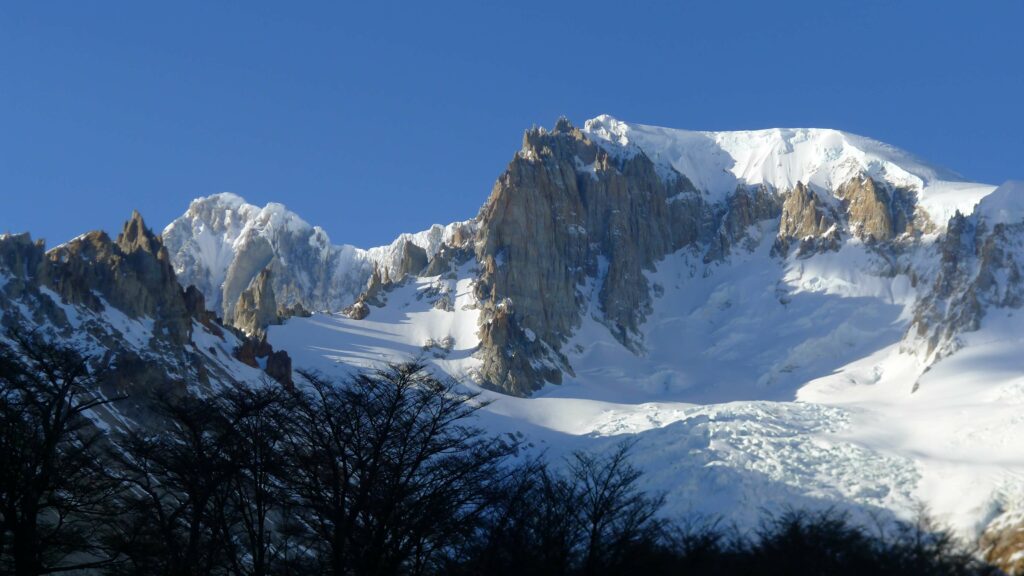
Cerro San Lorenzo is the second highest peak in the Patagonian Andes (47° 36′ S, 72° 19’W). It’s a huge mountain range that rises about 3300meters out of its surroundings.
Not only its elevation is very special, also its location. This mountain stands between the southern and the northern continental icefields and exactly between the Argentinian and the Chilenian boarder.
It is surrounded by four huge glaciers.
We choose the so called “routa de Agostini”, named after the first climber Padre de Agostini in 1943.
We offer this route as a wonderful ski touring expedition.
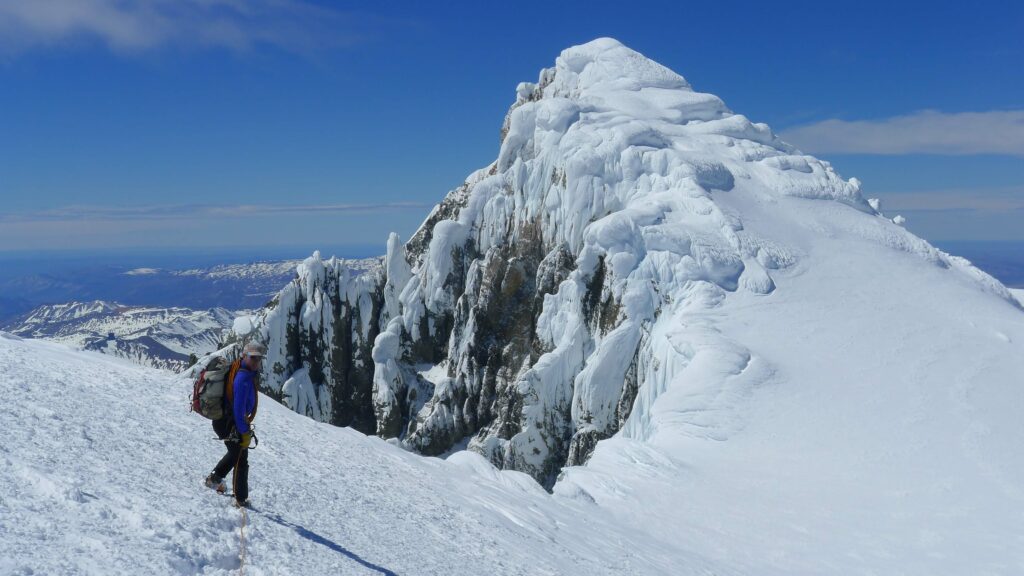
Itinerary ski touring Patagonia, Cerro San Lorenzo:
Day 1
Transport from Balmaceda airport to the hotel in Coyhaique.
Meet and greet with the guides and the other guests.
Night in a hotel in Coyhaique
Day 2
Transfer by car to Cochrane, one of the last small villages at the famous routa 40. (6 hours)
Overnight stay in a hotel in Cochrane
Day 3
Transport with a fourwheel drive car to Fundo San Lorenzo, our starting point
Here we enjoy a typical, delicious patagonian grilled sheep, a “Cordero Patagonico”
Night at the Fundo, a local farmers mountain home
Day 4
Trekking to Refugio Toni Rohrer, a small pretty shelter in the woods. Night at the Refugio
Day 5
We reach Paso del comedor and Brecha del comedor (aprox. 6hrs)
Overnight in the tent
Day 6
Cumbre!!! All the way up to Cerro san Lorenzo today and a great ski down back to the camp (aprox. 8-9hrs)
Overnight in the tent
Day 7
Back to Refugio Rohrer
Day 8
Back to Fundo San Lorenzo
Overnight stay at the Fundo
Day 9
Transport back to the hotel in Coyhaique
(This program is base on nice weather. As the weather can change very quick in this area, it’s important to plan a couple back up days)
Day 10-12
back up days
Map San Lorenzo, Skitouring Patagonia:

Personal requirements:
Proper parallel turn in all snow conditions
Walking with crampons
Enough personal fitness to climb 1000m a day (total 3100m), with a backpack (15-18kg)
How to get there:
Flight to Santiago de Chile and from there to Balmaceda (BBA) airport. It’s served by Latam airlines. That’s where we pick you up.
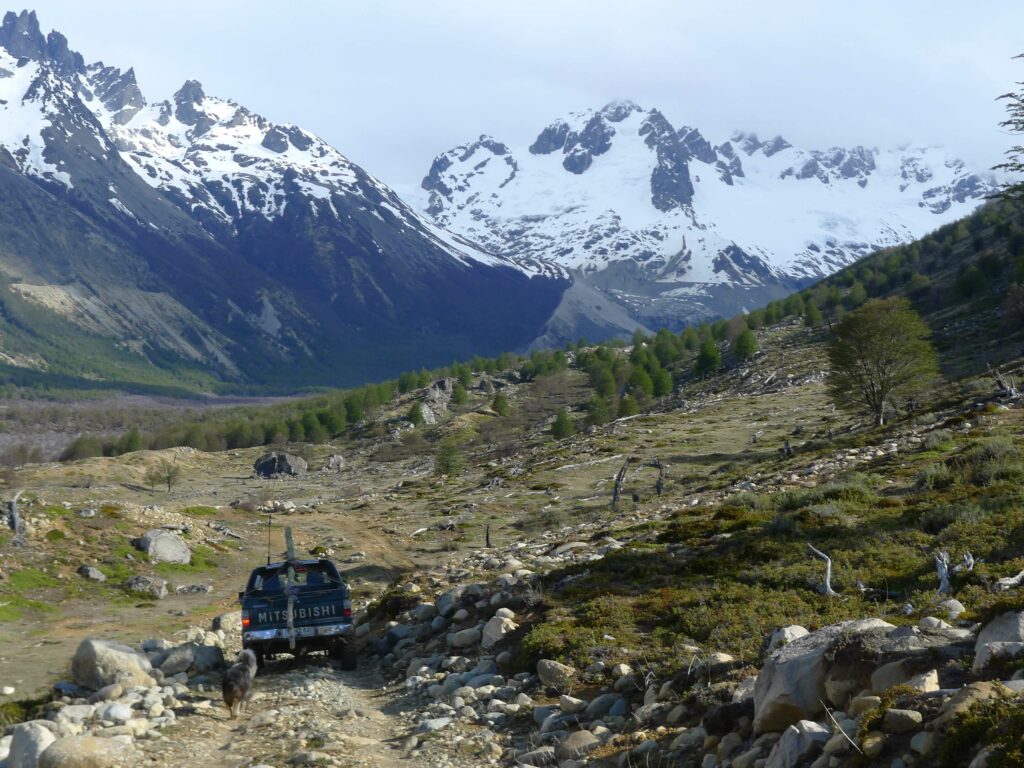
Price Skitouring Patagonia trip:
Please contact us for the actual price and your group size
Included in the price:
Organisation, 2 local IVBV-IFMGA mountain guides, transport from Balmaceda airport, Coyhaique to Fundo San Lorenzo and back, all meals, 1 night at a Hotel, luggage transport to the mountain hut by horse, tents and cooking equipment
Not included in the price:
Personal equipment, personal insurances (accident, annulation, travel etc.)
Experience Report from a Skitouring Patagonia trip:
Cerro San Lorenzo – A ski expedition on the second highest mountain of Patagonia
Cerro San Lorenzo is with 3706m the second highest mountain of Patagonia. It is one of the greatest mountain massifs Chile and Argentina have to offer. Like a gigantic castle, the mountain’s shape rises far to the east over the Argentine pampas. Parque Nacional Perito Moreno lies in the south of it.
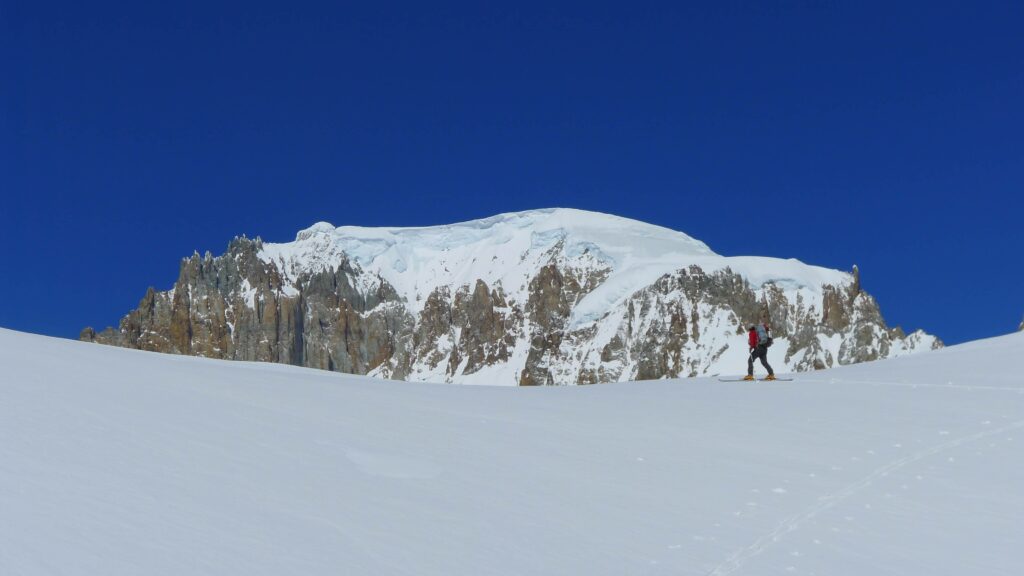
De Agostini Route
For our expedition we decided for the “normal route”, the Route de Agostini. A Salesian priest who is able to climb the mountains was the first to dare to climb the impressive mountain via de Agostini Route.
Patagonia alone is a world in itself. But the region of the Cordillera, which houses the high peaks of San Lorenzo, is even more special. These mountains occupied a different position alds the other groups of the Cordillera Patagonia Austral.
They are the only ones that have moved to the east with comparison of the axis of the Andes. More than at any other place in Patagonia, the history of the Andinists who have circumnavigated this mountain has been shaped by researchers, geographers, miners, farmers with estancias and military.
Thus exciting stories of the whole world were created.
Great mountain ambience
This massif does not offer spectacular yellow, grey or pink granite walls as its famous neighbor the Fitz Roy massif. Here there is a spectacle of various coloured volcanic stones which are not very suitable for climbers. What is extraordinary, however, is the ambience. The impressive solitude of the main summit which resembles from its proportions a Himalayan summit, the colorful swamp meadows and high plateaus of Argentina and the green valleys of Chile on the other side.
Hidden Paradise
If you want to explore real, wild Patagonia, you will find a hidden paradise here. This massif lies roughly between Lago Pueyredon – Cochrane in the north and Paso de la Balsa in the south. In the east of the Argentine side the valleys are more and more dry and sandy with contrast to the Chilean west where dense, almost impenetrable Lenga forest lies. The summit of San Lorenzo with its 3706m is the second highest of the Patagonian Cordillera Austral. Only the Cerro San Valentin and the adjacent Cuerno de Plata which dominate the northern continental ice field are higher.
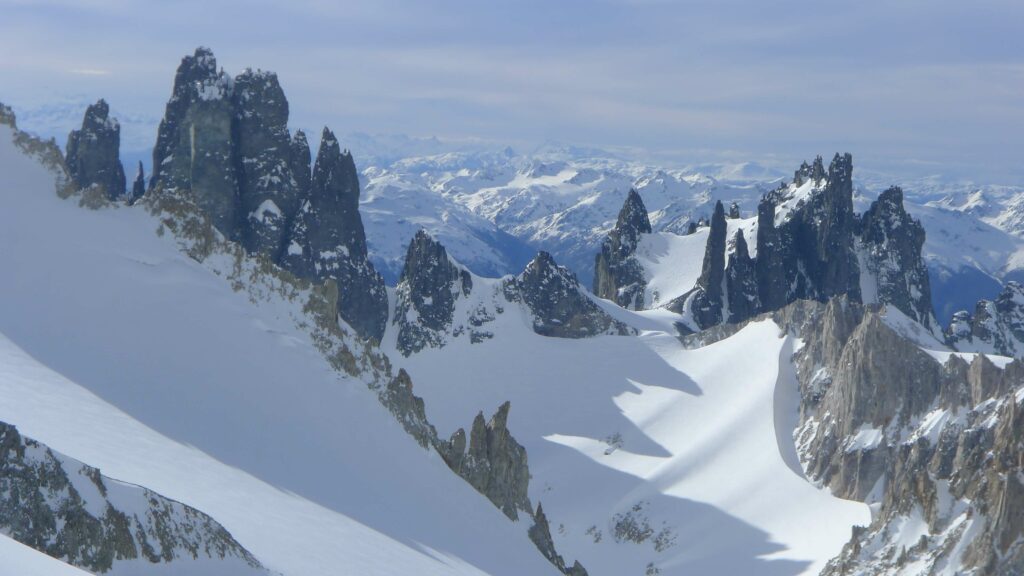
Discovering San Lorenzo
The first one who was really interested in this mountain was the naturalist Clemente Onelli (164-1924). After his studies in Rome he left for Argentina to work out the borders of Argentina with Perito Moreno. Together with geographers and border committees. Onelli followed the transit path of the Indios, which is today the Ruta Nacional No. 40, through the Valle de l Pintura. He said about this region: “It is the biggest forgotten landscape the creator made in the world. After days of riding through the dry Argentine steppe he finally passed the deep green Lago Pueyredon, which had been discovered by the geographers shortly before. From there he followed the Rio Oro. At the end of this path, where he found many obsidian peaks, he finally came across the impressive San Lorenzo Massif.
He described it as follows:
From here I saw a gigantic, grandiose crown of a bluish mass of ice that dominated the whole landscape, it was an huge mountain towering over the sky tent, its shape and dimension reminded me of Mont Blanc.
There he found other goegraves exploring its deep blue lagoons, rivers and glaciers.
First Ascent
This magical place attracts mountaineers as well as nature lovers who want to hike around or simply enjoy this natural spectacle. Shortly thereafter, gold seekers and sheep barons came to this area, who appropriated huge estancias. Today after the wool and gold boom the sheep farmers live here in simple conditions and it is again the epoch of isolated nature freaks arrived. Many farmers have moved to places like Comodoro Rivadavia to work in the Petrol.
De Agostini
The first one who turned his eyes to the San Lorenzo out of mountaineering interest, was probably Father Alberto Maria de Agostini (1883-1937).
The formidable walls that surround the San Lorenzo from all sides cut apart in thousand meter height, look like a gigantic castle that has its white summit of ice mushrooms against all mountaineers.
This mountain which has a beautiful, polished ridge from this side, which is encrusted by ice and snow, appeared like a sphinx. In 1940, after often dreaming of climbing this mountain, he began to explore the various valleys for a possible ascent route.
1941
In 1941 he returned with two young climbers, Zampieri and Alfredo Lopez. They climbed various peaks and traversed glaciers to better explore the area. Because of the war in Europe in 1943 no Italian mountain guides could accompany him as in earlier expeditions. He was accompanied by two members of the Club Andino Bariloche. The Swiss mountain guide Alejandro Hemmi and the Austrian Heiberto shmoll, a gifted climber. Thanks to some Italian engineers, who worked on the road to the south, they quickly reached the Valle Rio Oro by ox and cart. The ascent to the foot of San Lorenzo through a narrow gorge was precarious. Steep rock walls with condor nests bordered the falling mountain stream. At the forest border they set up a base camp of para boards.
Summit
On 17.12.1943 he was the first to reach the summit at the age of 60, which they reached after almost two weeks via the so-called de Agostini Route. Over glaciers passes and a steep 500m long wall with Seracs they reached the pre summit and in the late evening and after hitting countless stairs in the ice they reached the main summit. Almost 3000 meters of altitude and 15km.
When dreams come true
Our dream was to be able to explore this secret area. There is not much to read from this massif. Nevertheless we felt well prepared and started our way from Bariloche through Argentina to the border pass Roballos by car. Home of the Guanacos and Avestruses, high plateaus whipped by the winter, colorful lagoons down into the valley of the Rio Baker. Almost unnaturally, this turquoise-green spray descends to Cochrane. A small town at Lago Cochrane, last bigger inhabited place of the Caretera Austral. Everything what is missing can be bought here in a typical supermarket. Typically you can find everything in the same four walls. From the cheese to the chainsaw, rifle, cleaning rag, pants, whatever you need to survive a longer time in the wilderness of Patagonia.
Fundo San Lorenzo
Towards the Fundo San Lorenzo the road is getting smaller and smaller and without 4×4 it is recommended to either continue walking or to contact Luis Soto from Fundo San Lorenzo. He was happy to pick us up and take us to his paradise the Fundo. A summer pasture where he lives with his family in summer and where his cows, horses and sheep graze. He has set up a wonderful campsite here even with hot showers.
Refugio – home away from home
The next morning we walk up to the base camp of San Lorenzo in rainy weather along the almost 300m high Arroyo San Lorenzo. We do the almost 2.5 hour walk twice, as we have to carry our touring skis, tent, sleeping bags and food for about 10 days. The base camp is a beautifully made Refugio with a typical Chilean cypress shingle roof and wooden board walls. There is even an oven in which I bake four times wholemeal bread with raisins during our stay. This Refugio was lovingly created by the Soto family with financial support from Mrs. Rohrer. On a joint ascent of the Cerro San Lorenzo, her husband and Swiss mountain guide died in a tragic accident.
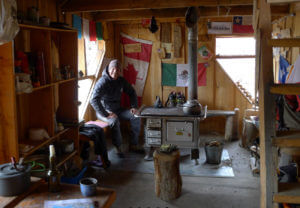
The adventure can start
Now we are already here for a week, we want to enjoy this Patagonian expedition. At this time of year (at the beginning of October) you won’t find a soul here. Some birds and a red woodpecker have been seen so far. Yesterday we explored a parallel valley in Argentina. First by dense bushes and partly swampIn the evening we are back in Chile at the Refugio Toni Rohrer and enjoy a lentil stew with lots of chili over a fire.
Depositing material
The days before we explored part of the de Agostini route and deposited some of the items like tent and food. Our goal is to climb the summit on two beautiful days. But since it is about a 3000 meters ascent only a few kilos. These tours were beautiful, unbelievable this landscape. Granite towers, glaciers, valleys as far as the eye can see. Once we wanted to try a summit attack. But the typically strong Patagonian wind made it impossible to get further. Thus we came back to the hut in the evening at 19 o’clock. Today we make a comfortable hut day. Sawing wood, baking bread and getting the material in shape, tomorrow we should start.
An other try
Thinking again about the luggage, have we taken everything we will need with us? The weather looks promising, still some clouds but it looks promising. We put the track to Paso Comedor in already some days ago. So it quickly goes uphill. After four hours we reach the brecha de la Cornisa, our camp for tonight. It storms, we have difficulties setting up the tent and the drops of sweat from the ascent freeze quite fast. In the tent we nest ourselves in warm down sleeping bags, cook ourselves a strengthening dinner and enjoy the enormous sunset.
Night before the adventure
Between the rock towers and on the big glacier we try to sleep for a few hours. The continuous knocking of the tent wall changes after some hours into a silence, as it can probably only exist up here. Alarm at 4.00 am, the calming view from the tent shows only a starry sky. A few Mate teas and a Chilean breakfast, getting into the stiff shoes, putting on a climbing harness, everything is ready and off we go.
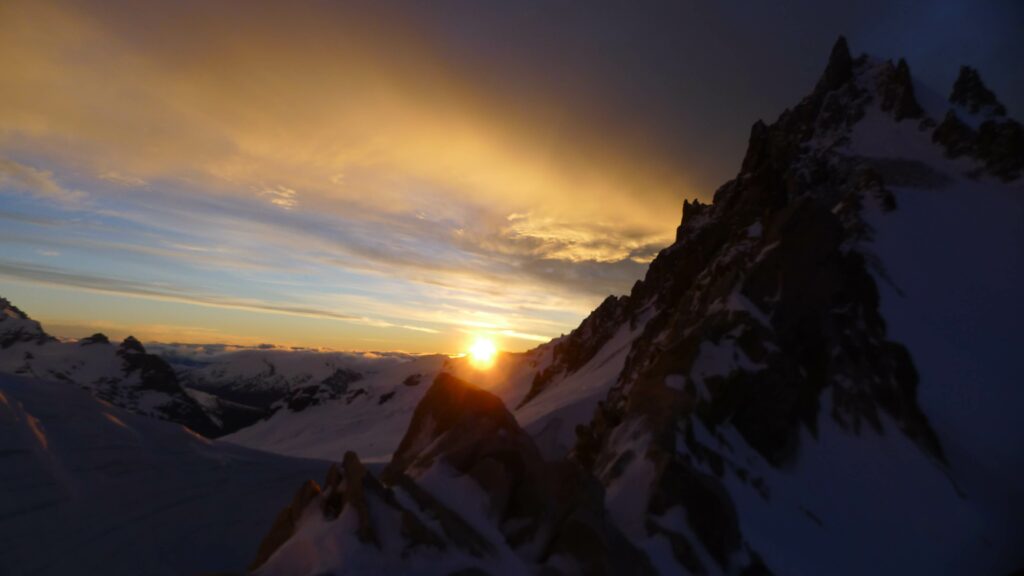
The climb
Over a small couloir we climb on the huge Coshuenqo glacier. It’s freezing cold but the fact that we’ll finally go to San Lorenzo today makes my blood boil. The descent from 100M and the 2Km long traversing of the glacier makes our bodies wake up. Finally we stand under the huge serac area.
Is there a way through the seracs? Will the weather hold?
Step by step we work our way up between the crevasses. We master a few climbing passages well and after four hours we stand on top of the long ridge leading to the pre summit. The view is simply stunning. No house and no road for miles, but countless Chilean and Argentinean peaks and turquoise, green, blue and grey lagoons. Glaciers and rivers as far as the eye can see. It is pleasantly warm today and amazingly no wind blows.
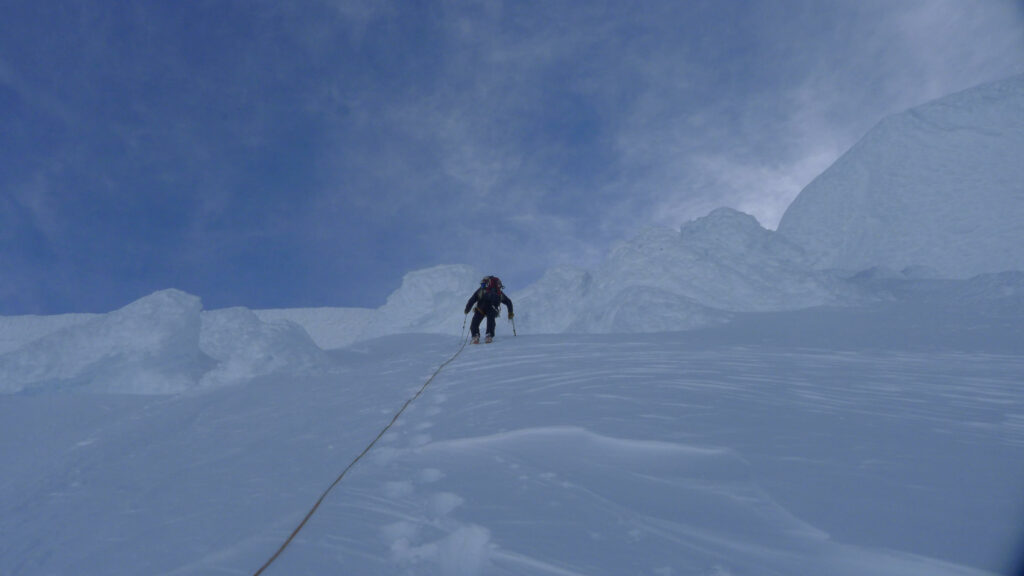
Summit
It has 20cm of fresh snow. The real summit shows up only after we have bypassed the pre summit west. The sight of the summit is beautiful! It is covered by the typical mushrooms formed by humidity and the strong winds. Now it is time to descend again and climb the summit with the newly gained strength. Unbelievable, we made it! After 8 hours the destination is reached, we are overjoyed. Unfortunately we can’t stay too long, we want to go back to the tent today.
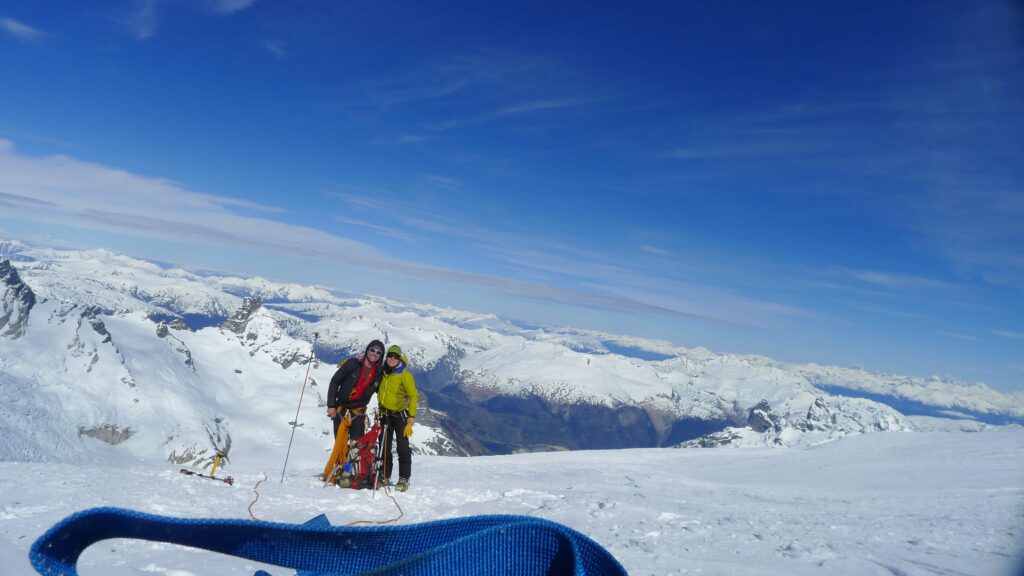
The descent
The descent and the downhill without any problems. We’re safely and overjoyed, but also tired, back to our camp. We have saved one last fine pasta dinner, which we enjoy to the full. We even find a trickle and don’t have to melt any water for today. How well it sleeps in our tent today, I would not change it with any 5 star hotel.
Already the last day of our expedition arrives, a long beautiful ski descent to the hut, packing everything into the backpack and another two hours marching to the Fundo San Lorenzo.
Louis has prepared the most beautiful surprise for us. He heated the oven for the hot shower water. We enjoy the most pleasant shower and body and mind relax slowly but surely. Our dream has come true.
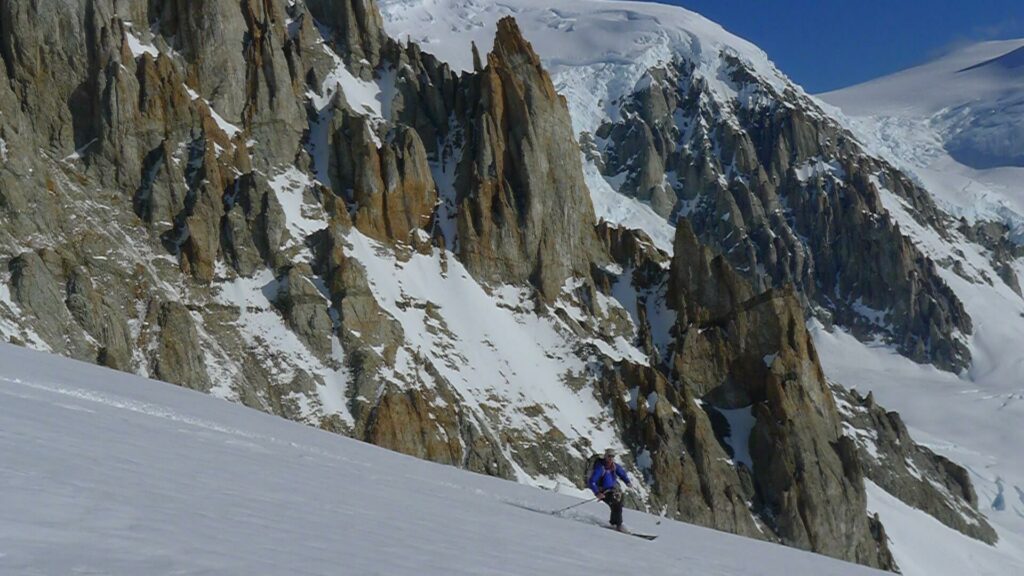
Autor ski touring Patagonia:
Ella Alpiger, owner of Patagoniatiptop and Patagonia lover. Her favorite animals are the Cuanacos, often to be seen in the Patagonian step land on the way to Cerro San Lorenzo base camp:
